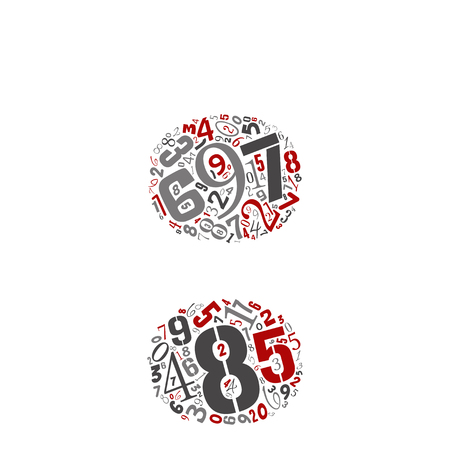Introduction to Astrological Compatibility
When it comes to relationships, everyone wants to know if they are truly compatible with their partner. While there are many ways to explore this question, astrology offers a unique and insightful approach. By looking at your birth chart—a cosmic snapshot of where the planets were when you were born—you can gain a deeper understanding of yourself and how you connect with others. In American culture, astrology is often used as a fun and meaningful tool for self-discovery and relationship guidance.
What Is Astrological Compatibility?
Astrological compatibility, sometimes called synastry, looks at how two peoples birth charts interact. Instead of just comparing zodiac signs (like Aries and Libra), this method dives into the placements of the sun, moon, rising sign, Venus, Mars, and more. Each of these elements reveals something about your emotional needs, communication style, love language, and overall energy in relationships.
Why Use Your Birth Chart?
Your birth chart is like a personal blueprint. It shows your strengths, challenges, desires, and what you’re drawn to in others. When you compare your chart with someone else’s—whether it’s a romantic partner, friend, or family member—you can see where you naturally align and where you might need extra understanding or patience.
Key Elements in Relationship Astrology
| Chart Element | What It Reveals |
|---|---|
| Sun Sign | Your core personality & ego needs |
| Moon Sign | Your emotions & inner self |
| Rising Sign (Ascendant) | Your outer style & first impressions |
| Venus Sign | Your love language & attraction style |
| Mars Sign | Your drive & passion in relationships |
Exploring these parts of your chart helps you understand why you vibe with certain people and clash with others. For example, if your Venus is in Cancer, you might crave emotional security in love; if your partner’s Venus is in Aquarius, they might value freedom and independence. Knowing this helps both of you navigate differences with compassion.
2. Understanding Your Birth Chart Fundamentals
When it comes to astrological compatibility, your birth chart is like a personal map of the stars—a cosmic fingerprint that shapes how you connect with others. To truly understand your relationship dynamics, its essential to get familiar with the three core elements of your chart: your Sun, Moon, and Rising signs. Each one reveals a different layer of who you are and how you interact in love, friendship, or partnership.
The Big Three: Sun, Moon, and Rising Signs
Let’s break down what each sign means for your personality and relationships:
| Sign | What It Represents | Influence on Relationships |
|---|---|---|
| Sun Sign | Your core identity, ego, and what drives you at your heart. | Shows your basic needs in a relationship—what lights you up and keeps you motivated. |
| Moon Sign | Your emotional self, inner moods, and how you process feelings. | Reveals how you nurture or need to be nurtured; key for emotional bonding and comfort levels. |
| Rising (Ascendant) Sign | The mask you show the world; your style of first impressions and approach to life. | Affects attraction and chemistry—how others see you and how you initiate connections. |
Why These Signs Matter for Compatibility
In American culture—where dating apps and first impressions can mean everything—the Rising sign explains why some people click instantly while others take time to warm up. Your Sun sign tells you what kind of partner brings out your best self. And your Moon sign? That’s where emotional safety lives; it’s the secret sauce for feeling truly “at home” with someone.
Example: Finding Your Cosmic Match
If your Sun is in Leo (bold, expressive) but your Moon is in Cancer (sensitive, nurturing), you might crave both excitement and deep emotional security. Someone whose chart complements both sides can be especially harmonious for you.
How to Use This Info in Real Life
- Date Night: Pick activities that match both your Sun’s energy and your Moon’s comfort zone.
- Communication Styles: Notice if your partner reacts more to how things look (Rising), feel (Moon), or sound logical (Sun).
- Troubleshooting: When things feel off, check if it’s a clash between emotional needs (Moons) or just different outward styles (Rising).
Diving into these three signs is the first step toward understanding not only yourself but also the cosmic chemistry between you and others. As we move forward, keep these basics in mind—they’re the foundation for unlocking deeper relationship insights through astrology.

3. Key Astrological Aspects for Relationships
Understanding the Stars That Connect Us
When it comes to love and relationships, your birth chart reveals more than just your Sun sign. The planets, their placements, and how they interact set the stage for romance, attraction, and the kind of partnership you’re likely to experience. Here’s a breakdown of the most important astrological factors to explore in your chart if you want to understand your relationship patterns on a deeper level.
The Big Players: Venus and Mars
Venus and Mars are known as the “love planets.” They tell us how we give and receive affection, what attracts us, and how we express passion.
| Planet | What It Represents in Love | How It Shows Up |
|---|---|---|
| Venus | Your style of loving, what you value in relationships, and how you attract partners | The way you flirt, show affection, your taste in romance |
| Mars | Your desire, sexual energy, and how you pursue what (or who) you want | Your drive in dating, physical chemistry, assertiveness in love |
Pro Tip:
If you’re checking out compatibility with someone else, compare where Venus and Mars are placed in both charts. Fire signs (Aries, Leo, Sagittarius) bring excitement; earth signs (Taurus, Virgo, Capricorn) ground things; air signs (Gemini, Libra, Aquarius) spark mental connection; water signs (Cancer, Scorpio, Pisces) deepen emotional intimacy.
The Moon: Your Emotional Blueprint
The Moon represents your emotional needs—how you nurture and want to be nurtured. In relationship astrology (also called synastry), the Moon’s placement can reveal whether two people will feel emotionally safe with one another or not. If your Moon signs vibe well together (for example: both are water signs), there’s a natural comfort between you.
Sun Sign Connections: Identity & Compatibility
The Sun reflects your core identity. While “what’s your sign?” is common small talk in American dating culture, there’s more beneath the surface. When two people’s Sun signs are compatible (like Leo with Sagittarius), it creates harmony. But even challenging pairings can work if other planetary connections support them!
Quick Compatibility Table:
| Your Sun Sign Element | Best Match Elements | Possible Challenges With |
|---|---|---|
| Fire (Aries/Leo/Sagittarius) | Air & Fire | Earth & Water (can feel too heavy or emotional) |
| Earth (Taurus/Virgo/Capricorn) | Earth & Water | Fire & Air (may seem too impulsive or detached) |
| Air (Gemini/Libra/Aquarius) | Air & Fire | Earth & Water (may feel slow or overly sensitive) |
| Water (Cancer/Scorpio/Pisces) | Water & Earth | Fire & Air (could feel overwhelming or distant) |
The Rising Sign: First Impressions Matter
Your rising sign (or ascendant) is all about first impressions—the “vibe” you send out before someone gets to know the real you. In relationships, this sign shows what kind of partner you naturally attract and how others perceive you at first glance.
Diving Deeper Into Synastry: How Charts Interact
If you’re curious about why sparks fly—or fizzle—with certain people, synastry is where the magic happens. This technique compares two birth charts side-by-side to see where planets align or clash. Key aspects like conjunctions (planets close together), trines (easy flow), and oppositions (magnetic tension) all play a part in relationship dynamics.
4. Synastry: Comparing Two Charts
If you’ve ever wondered why you instantly click with some people and feel challenged by others, synastry might have the answers. Synastry is the art of comparing two birth charts to see how your planets interact with someone elses. It’s like a cosmic relationship map, revealing your natural chemistry, strengths, and potential areas for growth.
What Is Synastry?
In astrology, synastry looks at the planetary positions in both your chart and your partner’s chart. By analyzing how these placements line up, astrologers can spot where you support each other—and where you might push each others buttons. Think of it as a way to better understand your connection, whether it’s romantic, platonic, or even professional.
Key Planets and Aspects in Synastry
Some planets and aspects are especially important when comparing charts. Here’s a simple overview:
| Planet/Aspect | What It Reveals |
|---|---|
| Sun & Moon Connections | Emotional compatibility, mutual understanding |
| Venus & Mars | Romantic attraction, sexual chemistry |
| Mercury Aspects | Communication styles and mental rapport |
| Saturn Aspects | Karmic lessons, long-term commitment challenges or stability |
| Jupiter Aspects | Shared optimism, growth together |
| Oppositions & Squares | Potential friction, but also opportunities for growth if handled well |
| Trines & Sextiles | Naturally harmonious energies that make things flow easily between you two |
The Beauty of Differences and Challenges
No relationship is perfect—and synastry doesn’t predict a flawless partnership. Instead, it highlights where you and your partner can learn from each other. Sometimes challenging aspects point out areas that need attention or compromise; other times they signal passionate chemistry that keeps things exciting. Embracing these differences can actually strengthen your bond.
How to Use Synastry in Everyday Life
You don’t need to be an expert to start exploring synastry. Many online tools let you compare birth charts for free—just enter both birthdays, times, and places. Look for those special connections in your charts and use them as a guide to support deeper understanding, empathy, and communication in your relationships.
5. Practical Tips for Using Astrology in Relationships
How to Bring Astrology Into Your Love Life
Astrology can be a fun and insightful tool for navigating relationships, but its important to stay grounded and open-hearted. Heres how you can use your birth chart wisdom in real-life romance, whether you’re swiping right or deepening a long-term bond.
The Do’s and Don’ts of Astrological Compatibility
| Do’s | Don’ts |
|---|---|
| Use your chart as a guide, not a rulebook. | Dont judge someone based solely on their Sun sign. |
| Start conversations about birth charts with curiosity. | Dont force astrology on a partner whos not interested. |
| Explore emotional needs (like Moon signs) together. | Dont assume compatibility means zero conflict. |
| Celebrate your differences and learn from them. | Dont blame astrology for relationship issues. |
Open-Hearted Practices for Modern Love
- Share Your Charts: If both of you are open, swap birth details and pull up your charts together. It’s a fun way to get to know each other’s quirks and strengths.
- Tune Into Communication Styles: Look at Mercury placements to understand how each of you processes information and talks things out. This can help avoid misunderstandings before they start.
- Honor Emotional Needs: The Moon sign reveals what makes you feel safe and loved. Chat about what soothes each of you—maybe it’s quality time, words of affirmation, or just some space.
- Embrace Growth: No combination is “perfect.” Use challenging aspects (like Mars squares) as opportunities to grow closer by working through differences with empathy.
- Create Rituals Together: Mark special dates like Venus returns or New Moons with intentional date nights or heartfelt conversations. Let the stars inspire new traditions that feel meaningful for both of you.
Your Relationship Toolkit: Questions to Explore With Astrology
- What does my Venus say about how I give and receive love?
- How do our Moon signs influence our emotional connection?
- Are there any planetary aspects that highlight areas for growth?
- What qualities do we bring out in each other according to our synastry?
- How can we celebrate our unique cosmic chemistry?
The heart of astrological compatibility is compassion. Use your birth charts as a map—not the destination—and let curiosity, kindness, and honest communication lead the way in modern love.
6. Emotional Growth and Destiny in Relationships
Understanding your astrological compatibility isn’t just about finding the “perfect match” or predicting relationship success. It’s a journey of emotional growth, self-acceptance, and learning how your unique energy interacts with others. In American culture, where individuality is celebrated, astrology can offer powerful insights into why you connect deeply with some people while others challenge you to grow.
Emotional Healing Through Self-Awareness
Your birth chart reveals your emotional needs and patterns in relationships. When you know your Moon sign, Venus sign, and even your partner’s placements, you can see why certain behaviors trigger you or make you feel safe. For example:
| Astrological Aspect | What It Reflects | How It Supports Healing |
|---|---|---|
| Moon Sign Compatibility | Emotional needs and comfort zones | Helps understand triggers and nurture each other better |
| Venus Sign Compatibility | Love language and affection style | Encourages acceptance of different ways of expressing love |
| Saturn Aspects | Karmic lessons and boundaries | Shows where growth and patience are needed for lasting bonds |
This awareness can be deeply healing. Instead of blaming yourself or your partner for misunderstandings, you learn to see these moments as invitations to grow together. You may realize that what feels difficult now is part of your soul’s journey toward greater compassion and resilience.
Navigating Your Destiny Together
Your birth chart also highlights themes of destiny—those fated connections that seem meant to teach you something important. North Node connections or strong synastry aspects can show up as relationships that push you out of your comfort zone or inspire major life changes.
Common Destiny Markers in Synastry Charts:
- North Node Contacts: These often point to a relationship that guides both people toward their true life path.
- Pluto or Uranus Aspects: Intense transformations or sudden changes brought through connection.
- Soulmate Indicators: Such as Sun/Moon conjunctions or harmonious Venus/Mars aspects, which create a sense of “coming home.”
The beauty of understanding these markers is knowing that every relationship—whether easy or challenging—has a purpose in your personal story. You start to trust the process, accepting yourself and others with more empathy.
Your Chart as a Map for Self-Acceptance
By exploring astrological compatibility, you’re not just looking for answers outside yourself—you’re learning how to honor your feelings, respect your journey, and walk hand-in-hand with destiny. Whether it’s friendship, romance, or family ties, your birth chart offers a compassionate roadmap for healing old wounds and growing into who you’re meant to be—with others by your side.


